Gracilis muscle Origin, Insertion, Function, Exercise
What is a Gracilis Muscle?
The gracilis muscle is a long, thin muscle that runs along the inner thigh. It originates from the pubic bone and inserts into the tibia bone, just below the knee joint.
The gracilis muscle is part of the medial compartment of the thigh muscles, along with the adductor muscles. It is primarily responsible for hip adduction, which means it brings the thigh towards the midline of the body, as well as assisting in knee flexion and internal rotation.
The gracilis muscle receives its blood supply from the medial femoral circumflex artery and the obturator artery, both of which arise from the femoral artery.
The muscle is innervated by the obturator nerve, which is a branch of the lumbar plexus. The gracilis muscle also shares nerve fibers with the other muscles in the medial compartment of the thigh, including the adductor muscles.
Table of Contents
Introduction
- The Gracilis muscle is a long & slender muscle situated in the medial (adductor) compartment of the thigh. It forms part of the adductor muscle group together with the adductor longus, adductor brevis, adductor Magnus & pectineus muscles. The Gracilis muscle is the most superficial hip adductor. It is also the weakest member but the only hip adductor that crosses & acts on two joints; the hip & knee.
- Gracilis extends from the coxal bone to the tibia and, you are capable of thigh adduction & flexion, as well as leg flexion & medial (internal) rotation. These actions have several important roles, for instance, balancing the trunk during walking.
Origin
The gracilis muscle originates from the pubic symphysis and the adjacent pubic bone. Specifically, it arises from the superior ramus of the pubis and the adjacent inferior pubic ramus.
Insertion
The gracilis muscle inserts into the medial surface of the tibia bone, just below the knee joint. It forms a tendinous insertion that is merged with the tendons of the sartorius and semitendinosus muscles, which attach to the pes anserinus. The pes anserinus is a bony prominence located on the medial aspect of the tibia, where the tendons of the three muscles mentioned above converge and insert.
Structure
- It arises by the thin aponeurosis from the anterior margins of the lower half of the symphysis pubis & the upper half of the pubic arch.
- The muscle fibers run vertically downward and end in a rounded tendon. This tendon passes behind the medial condyle of the femur, curves around the medial condyle of the tibia where it becomes flattened, & inserts into the upper portion of the medial surface of a body of the tibia, below the condyle. For this cause, the muscle is a lower limb adductor. At its insertion, the tendon is located immediately above that of the semitendinosus muscle, & its upper edge is overlapped by the tendon of the sartorius muscle, which it joins to form the pes anserinus. Pes anserinus is divided from the medial collateral ligament of the knee joint by a bursa.
- A few of the fibers of the lower part of the tendon extend into the deep fascia of the leg.
Nerve supply
- The gracilis muscles are supplied by the anterior branch of the obturator nerve (L2-L4). The anterior branch of the obturator nerve is supplied by the adductor longus, & sometimes the adductor brevis.
- There are 5 -7 muscle fiber bundle compartments in the gracilis muscle, with the nerve branches coursing along with each compartment, indicating possible independent neuromuscular compartment functioning.
Blood supply
- Gracilis muscle receives the majority of its vascular supply from the ‘artery to the adductors’, which is a branch of the deep femoral artery. The ‘artery to the adductors’ muscle enters the gracilis muscle via its lateral surface, approximately one-third away from its origin.
- The proximal part of the muscle also receives a small proportion of blood supply from the medial circumflex femoral artery and the distal third of the gracilis muscle is also to be supplied by a minor branch of the femoral artery.
Relations
- Gracilis muscle is the most superficial muscle of the medial compartment of the thigh. It is overlaid superficially by the skin & subcutaneous tissue, while its medial part is also covered by the deep layer of fascia lata. The part of the fascia lata between the sartorius muscle & gracilis muscle tendons is pierced by the saphenous nerve, which exits the adductor canal to become subcutaneous. The saphenous branch of the descending genicular artery also courses between sartorius muscle & gracilis musccle.
- Adductor brevis & adductor Magnus muscles are located deep in the gracilis. However, the spiral trajectory of this muscle can result in some complex & changing relations. Therefore, the gracilis is also neighboring the medial border of adductor Magnus, the lower border of adductor brevis, & it is located medial to adductor longus. The tibial collateral ligament is located deep in the gracilis tendon, being separated from it by the anserine bursa.
Function
- Gracilis muscle acts on the hip & knee joints, resulting in several movements:
- Strong leg flexion & the medial (internal) rotation around the knee joint when the knee is in a semi-flexed position.
- Weak thigh flexion & the adduction around the hip joint, simply aid the other, more powerful thigh adductors.
- The main function of the gracilis is to help the hamstring muscles flex the knee, for example during the initial swing phase in walking, or during boat rowing. The medial rotation of the leg also becomes evident during walking, when the foot is solidly planted on the floor. When the lower extremity is fixed, the gracilis muscle laterally rotates the femur & pelvis around the tibia, which acts as a fulcrum. This function is important to balance the trunk. However, all movements of the gracilis mscle become evident during horse riding, when the muscle helps the rider to grip the horse (thigh adduction) & control the flexed knee.
Assessment
- Adductor tendinopathy is usually felt as groin pain on palpation of the adductor tendons, adduction of the legs &/or of the
- affected leg. Pain can develop gradually or appear as acute, sharp pain.
- A swelling or a lump may be also felt affected in the adductor muscle(s), stiffness in the groin site, or an inability to contract or stretch the adductors. In severe cases, physical activities will be restricted as the tendon can no longer sustain replicate tensile loading.
Clinical importance
Gracilis Muscle Pain
- You can experience pain in the Gracilis muscle for various reasons. It is important to remember that there is a difference between muscle pain & muscle soreness. If you feel like the Gracilis muscle is sore (most likely between 24 to 48 hrs after a workout) this is okay! It means that the Gracilis muscle has worked hard & needs some time to grow & recover.
- On the other hand, experiencing pain in the Gracilis muscle can be indicative of an injury to the muscle, & might be examined by a doctor or therapist. For instance, muscle spasms can cause pain in the Gracilis muscle. A spasm in the Gracilis muscle can be led by overuse, improper nutrition levels in the body, or a neurological condition. Moreover, the Gracilis muscle can be strained, which can be a very painful condition.
Gracilis Muscle Strain
- A strain on the Gracilis muscle is painful & often results in a limited range of motion. A Gracilis muscle strain can be caused by a sudden overstretching of the muscle, or from an overuse injury. Symptoms of a Gracilis strain include pain, bruising in the part of the muscle, swelling & muscle weakness. There are various grades of muscle strains, ranging from a grade 1 strain (mild) to a grade 3 strain (severe, tearing of the muscle).
- You might see the doctor if you suspect that you have strained the Gracilis muscle so they can give you a correct diagnosis. Treatment for a strain on the Gracilis muscle includes ice, heat, compression, and rest. Additionally, exercises to rehabilitate the Gracilis & treatments such as ultrasound or electrical stimulation can help to improve the recovery time of the Gracilis. Remember to follow your recovery plan in order to get back to the sport as fastly as possible!
Baseball: potential Gracilis injury
- Soccer, hockey, football, basketball, tennis, baseball, figure skating, baseball, & softball are all sports with a high incidence of hip adductor muscle strains, especially in men’s collegiate soccer, in which 46.5% of all hip & groin injuries were adductor muscle strains. Since it is a common injury, & the gracilis muscle is part of the adductor group, it is vital for athletes to incorporate adductor muscle strengthening into their training & to correct conditions such as over-pronation, which may predispose athletes to adductor strains.
- When patients present with atrophy of the gracilis muscle & atrophy of the adductor longus & adductor brevis, the inclusion of possible injury to the anterior branch of the obturator nerve might be included in the differential diagnosis; etiologies may include nerve impingement caused by a ganglionic cyst that emerges from the transverse acetabular ligament, neoplasm, hematoma, or iatrogenic nerve injury caused by the hip surgeries such as total hip replacements.
- When patients have pain along the distal portion of their gracilis tendon, where it becomes the pes anserine, there might be a high suspicion of pes anserine bursitis, especially if there is edema present. Pes anserine bursitis is generally seen in patients who have obese, have osteoarthritis, and are female. Soccer, hockey, football, basketball, tennis, baseball, figure skating, baseball, & softball are all sports with a high incidence of hip adductor muscle strains, especially in men’s collegiate soccer, in which 46.5% of all hip groin injuries were adductor muscle strains. Since it is a common injury, & the gracilis muscle is part of the adductor group, it is vital for athletes to incorporate adductor muscle strengthening into their training & to correct conditions such as over-pronation, which may predispose athletes to adductor strains.
Gracilis muscle stretching exercise
- Lunge Stretch
- Standing Lateral Lunge Stretch
- Butterfly Stretch
- Supine Wall Stretch
- Standing gracilis Stretch
- Kneeling gracilis stretch
- Frogger stretch
- Lateral squat
- Crossover stretch
- Reclining angle bound pose
- Hip Opener and Groin Stretch
- Squatting Groin Stretch
- Frog Squat With Arm Raise
- Runner’s Lunge

- Lunge Stretch
How to perform stretch:
- Begin kneeling on the ground in a lunge position.
- Bend your torso forward to bring the outside of the shoulder towards the interior of the lead knee.
- Then, lunge forward so the hips slide forward.
- You can feel a stretch along the inside of the forwarding leg.
- Hold this adductor stretch for 5- 10 seconds then release.
- Perform 10-12 repetitions.
- Standing Lateral Lunge Stretch
How to perform stretch:
- Stand in a broad stance position.
- Now bend your & knee & move your hips to that side.
- maintain posterior pelvic tilt during the stretch
- You can feel stretch inside of the opposite thigh.
- Hold for 5-10 seconds & release.
- You can enhance holding time in progression.
- Do this adductor stretch 4-5 times.
- Butterfly Stretch
How to perform stretch:
- Sit down on the ground with your legs in front of you.
- Reach forward & grab your left foot.
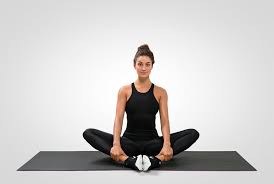
- You can bend the knee to help the hand & foot join.
- Slowly pull your left foot up towards the groin bending until it is at a comfortable place & the sole is facing your right thigh.
- Bend your right knee to bring your right foot toward the groin so that it is sole touches the sole of your left foot.
- Hold both feet with your hands & place your elbows on the knees.
- While maintaining the back straight, allow your knees to fall towards the ground.
- You can give gentle pressure to the inner thigh by pressing gradually on the knees with the elbows.
- You might feel pulling & tension in your groin.
- Hold the butterfly stretch for 20-30 seconds.
- Release & repeat 2-3 times.
- Supine Wall Stretch
How to perform stretch:

- In the supine position in front of a wall with the leg up on the wall.
- move towards the wall as you can, and maintain the comfortable stretch in the hamstrings.
- Maintain the leg straight while they slowly split open until you feel a stretch inner side of the legs.
- Hold the stretch for 15-30 seconds.
- Relax & repeat 3 times.
5. Standing gracilis Stretch
How to perform stretch:
- Start standing with the feet around 3 feet apart.
- Transfer the weight to one side & bend your knee.
- Keep the other knee straight to feel a stretch on the inside of the thigh.
- Hold the stretch for 15-30 seconds.
- Relax & repeat on the other side.
6. Kneeling gracilis stretch
How to perform stretch:
- Begin with your knees & hands on the ground.
- Straighten out a left leg to the side. Try to keep the leg on the floor.
- Move your butt back to the heel of your right bent knee.
- You can feel the stretch on the inner thigh of the left leg.
- Pause for 8-10 seconds, then release the stretch & back in.
- Repeat 8-10 times.
7. Frogger stretch
How to perform stretch:

- Start with your knees & forearms on the ground with your knees & feet wider.
- Try to keep the inner part of your feet on the floor.
- Sit the butt back to the heels, feeling the stretch on the inner thighs.
- Pause for 10-15 seconds, then release the stretch & back in.
- Repeat 8-10 times.
8. Lateral squat
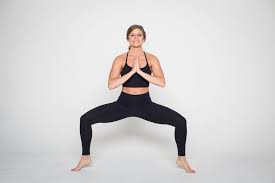
How to perform stretch:
- Stand tall & put the feet double shoulder-width apart.
- Transfer your weight to your left leg, bend your left knee, & push your hips back as if you are taking a sitting position.
- Drop as low as possible while keeping your right leg straight.
- Keep the chest up & your weight on the left leg.
- Breathe & hold for 15 to 20 seconds prior to returning to the beginning position.
- Repeat 2-3 times, then move to the other side.
9. Crossover Stretch
If you love dancing, this move might come naturally as it is the same as the “grapevine” dance move.
How to perform stretch:
- Start with the feet together, then step to the right with the right foot.
- Cross your both foot.
- Step to the right again with your right foot, & bring your left foot to join your right foot.
- Once both the feet are together and repeat on the opposite side.
- You can start gradually, but pick up the stride as you get used to the move.
- Do it 5-10 times.
10. Reclining angle bound pose
This is the best stretch if you spend most of the day in a sitting position.
How to perform stretch:
- Take a supine position on the ground.
- Bend both knees & draw your soles inward so that their borders are touching each other.
- Move the knees down toward the floor so that you can feel the groin muscles stretching.
- Breathe & hold this position for 15- 30 seconds.
- Repeat 3-4 times. Try to draw the feet closer to the buttocks with every stretch.
11. Hip Opener and Groin Stretch
How to perform stretch:
- Begin in a forward lunge position & drop your right knee to the floor.
- Place the left elbow on the inside of your left knee as pictured.
- Press the left elbow gently into your left knee & twist your torso to the right.
- Reach the right arm behind you until you feel a gentle stretch in the lower back & left groin.
- Hold the stretch for about 20-30 seconds, release & repeat on the right leg.
12. Squatting Groin Stretch
How to perform stretch:
- Take a standing position with the feet wide apart, toes pointing outwards.
- Slowly start squatting down until your knees are directly over the ankles & bend to 90 degrees.
- Put your hands on top of your inner thighs & gently push outward to open the hips.
- You will feel the stretch in the inner side of each leg.
- Hold for 20 – 30 seconds, relax & repeat 3 times.
13. Frog Squat With Arm Raise
How to perform stretch:
- Moving directly from the first stretch, place the right hand on the ground.
- Continue to gradually push your inner thigh outward, as you reach the left hand directly up to the roof, fingers pointed upward.
- With each breath, twist the upper body slightly further, reaching as high as you can.
- Your right heel might lift slightly.
- Then, switch the other sides.
14. Runner’s Lunge
How to perform stretch:
- Get on all fours, facing the front of the mat.
- Plant the fingertips gently into the floor as you extend your right leg behind you, maintaining the knee rested or lifted slightly.
- Press the right heel toward the back of the room.
- Bring the left foot forward so it is in line with your left hand.
- Maintain your head upwards.
- Inhale & exhale, driving the hips further into the ground with each breath.
- Then, move to the other sides.
Gracilis muscle Strengthening Exercises.
- Standing Leg Circles
- Side-Lying Hip Adduction
- Squat Side Kick
- Standing side Leg Raise
- Sumo Squat
- Cross Scissors
- Dumbbell Side Lunge
- Cossack Squat
- Copenhagen Side Plank
- Cable Hip Adductor
- Seated Hip Adduction
- Adductor machine
- Wide stance squat
- Standing banded adduction
- Seated banded adduction
- Lateral lunge
- Standing Leg Circles
How to do it?
- This is the dynamic warm-up exercise, this exercise improves blood circulation to the hip muscle & upper leg.
- for standing leg circle exercise, stand with feet hip-width apart.
- Raise the left leg off the floor. while balancing on the right leg, make a small circle with your left leg.
- Complete 10 to 20 repetitions on the left side then change to the right leg.
- Note: If you have a balance problem then stand close to a prop where you can help to maintain your body by holding something.
2. Side-Lying Hip Adduction
How to do it?
- This is the best exercise for the hip adductors that can be done on the ground while isolating a single leg at a time.
- All you need to do is to focus on contracting the hip adductor muscles to raise your leg off the floor.
- For this exercise, you have to lie down on your left side and take your arms in front of you with your elbows & forearm on the floor for support. raise the right leg over your lower leg placing your heels against the thigh of your bottom leg.
- maintain your leg extended, and raise it upward as much as possible.
- Slowly return to the starting position.
- Do 10-25 repetitions on the left side then move to the right leg.
- Note: You can add some provocation to your exercise by using a resistance band attached to an anchor or by strapping an ankle weight to the leg.
3. Squat Side Kick
How to do it?

- The squat side kick bodyweight exercise will utilize both the adductors & the abductors & is a great all-around lower limb exercise.
- This exercise combines 2 movements that enable both muscle strengthening & stretching which is important to decrease the risk of suffering from groin pain.
- For the Squat Side Kick exercise, you have to stand with a shoulder hip-width apart, and your hands are together in front of you.
- Flexed your knees until your thighs are parallel to the floor, then stand up & transfer your weight to your right leg while kicking out the left leg to the side.
- Back to squatting position then repeat it on another leg.
- Note: Your core muscles might be engaged throughout the movement with your back straight, chest up, & do not let your knees extend past your toes while squatting.
4. Standing side Leg Raise
How to do it?

- This is the best bodyweight exercise that can hit the hip adductors of one leg while hitting the hip abductors of the other leg as
- you will be using an isometric hold on your other leg to maintain it in the air.
- For this exercise, you have to stand with shoulders hip-width apart. now on the left leg away from the body.
- Then Lift the right leg as far as comfortable, & hold it there for 4-6 seconds.
- Raise your left leg to your right leg until they touch then lower back to the starting position. Complete 10-18 repetitions of 2-3 sets.
- Note: To make this exercise more challenging strap ankle weights to both legs.
5. Sumo Squat
How to do it?
- This variation of the squatting will hit the muscle groups in the lower limb plus the inner thighs.
- Maintain your back straight & your chest up throughout the exercise.
- Even though the sumo squat has a smaller range of motion compared with a regular squat, it is still an effective exercise that can be incorporated into normal workouts.
- For this exercise, you have to stand wider than the shoulder-width stance with your pointing outside.
- Take a squatting position, drop your hip down & back while your back is straight & chest up until your thighs are parallel to the ground.
- Push off through the ground and return to the starting position.
- Note: If you want to add some provocation to your exercise then hold a kettlebell in your hand.
6. Cross Scissors
How to do it?
- This is the best exercise to work hip adductor muscles & the core muscle simultaneously.
- Cross scissors are challenging as you require to stay in a crunched position throughout the movement.
- Maintain this position by crossing your legs in front of you need all your stabilizing muscles to be contracted.
- For this exercise, you have to Sit down & brace yourself by putting your hands on the floor back to you. move your leg off the ground in front of you at a 30-40-degree angle with one leg crossed over the other.
- Your core muscle might be engaged throughout the movement in a semi-“V” position change your legs out to the sides then bring them back closed while crossing the other leg over.
- Do this with an Alternate leg until you complete 10-20 repetitions on each side.
- Note: You can enhance the difficulty of cross scissors by sitting in a “V” position without bracing the upper limb with your arms.
7. Dumbbell Side Lunge
How to do it?
- The side lunge is an excellent exercise to improve your balance, stability, & lower limb strength.
- The side-to-side movement is both a strengthening & stretching exercise. Dumbbell Side Lunge exercise utilizes your hip abductors & hip adductor muscles.
- For this exercise, you have to stand with shoulder hip-width apart & hold the dumbbells at your chest level.
- Take a large step to your side & drop your hip down & back until your thighs are parallel to the floor while your foot is planted on the ground.
- Push through your flexed foot, & bring your back to the initial position.
- Repeat it for 10-15 repetitions then move to the next leg.
- Note: To make this exercise easy you can do bodyweight side lunges. your back might be in a neutral position & chest up while trying not to lean forward.
8. Cossack Squat
How to do it?
- Cossack Squat exercise moves the body through the frontal plane of motion, going side to side.
- Working lower limb at this angle can improve the flexibility of hips, knees, & ankles.
- You will increase your stability by mastering this exercise by getting a good stretch & strengthening the hip adductors.
- For this exercise, you have to stand with feet in a wide stance with toes pointing outside by dropping your hips downward & back.
- Squat down to that single side and shift your weight while your other leg is extended out with your heels on the floor, toes pointing up.
- Push through the ground with your flexed leg and bring your back to starting position.
- Repeat this exercise on the other leg by shifting the weight & lowering it down into a squat position on the other side.
- Note: Cossack Squat exercise requires a high degree of mobility so if you can not go all the way down then go as far as you can while trying to improve each workout. your back might be maintained in a neutral position throughout the exercise.
9. Copenhagen Side Plank
How to do it?
- Copenhagen Side Plank exercise is the most difficult variation of plank that not only hits the core muscles but also strengthens the hip adductors. Copenhagen Side Plank exercise will help to balance out the strength in the muscles on the outside of the hip.
- For this exercise, you have to lie down on the floor & perpendicular to the bench then brace yourself on your forearm & elbows.
- Lift with your flexed knee lift your top leg & place it on the bench.
- Hold this position.
- Complete 20-25 repetitions for 2 sets then do this on another side.
- Note: Increase the difficulty by doing this exercise with legs extended with only your ankle placed on the bench.
10. Cable Hip Adductor
How to do it?
- You may notice women at the gym doing this exercise while the men neglect it.
- It is time to move the stigma that cable hip adductions are not mainly, everyone might be doing this exercise to strengthen the adductors to reduce the risk of injury.
- Make sure you are warmed up with some dynamic stretches before performing this exercise then try to start with less weight & maximum repetitions until you are comfortable enough to increase the weight.
- Find an attachment that you can use to strap onto the ankle closest to the pulley.
- Set up the pulley around calve level. Stand to the side of the pulley. Brace yourself using your hand against the machine in a safe place where your fingers won’t get pinched. Your active leg might be up off the floor towards the pulley.
- Pull your leg away from the pulley towards the middle of your body.
- Slowly let leg return to its starting position Completed the desired number of repetitions
- Note: exercise can also be done with this same technique by attaching a resistance band to a fixed anchor point.
11. Seated Hip Adduction
- The seated hip adduction will isolate the hip adductor muscles when you are seated, only having to focus on bringing thighs together.
- Add Seated Hip Adduction exercise towards the end of your leg day after completing the bigger compound lifts such as squatting.
- Seat in the machine with back against the backrest
- Set the width of the knee pads to a manageable position that gives a stretch to the inner thighs but does not over-stretch the adductor muscles.
- Set up a lightweight for the 1st time set so that you do not overdo it.
- Squeeze thighs together while exhaling, until your knees meet in the center of the body.
- Slowly return to the initial position.
- Complete maximum repetitions.
12. Adductor machine
How to do it?
- Most people think of isolating the adductors, they may think of the classic adductor machine established in gyms across the world.
- Though this machine can do the best job of training the adductor, it is not the only movement that can yield good results.
- Considering that you can modify the amount of weight & width of the pads, this exercise is great for beginners. It is best to begin super light to get a feel for the exercise & avoid getting injured.
- For this exercise, you have to sit on the machine begin with sitting on the machine with the pads positioned between your legs as wide as is comfortable, & select your ability-wise resistance.
- In a controlled manner, contract thighs together just until the pads touch, & feeling the muscles contract.
- gradually reverse the movement, returning your thighs to the initial position. Repeat this exercise number of sets & repetitions.
- If just beginning, try 2–3 sets of 10 reps.
13. Wide stance squat
How to do it?
- Squatting is a king of leg exercises & this will stimulate the whole leg.
- There have different squat variations but here we discuss the wide stance squat also called sumo squat which will utilize inner thigh muscles.
- You can do this exercise with a variety of weighted equipment like a barbell, kettlebell, dumbbell, or sandbag — or with just only body weight.
- For the Wide stance squat exercise, you have to stand a little wider than the shoulder hip-width apart, and turn your toes outside.
- Shift your weight backward & slowly lower your hips until your thighs are parallel to the ground.
- Then return to the starting position by pushing through the ground, and your inner thigh muscles are contracted.
- Do 10-15 repetitions of 2-3 sets.
14. Standing banded adduction
How to do it?
- For this exercise, you need a resistance band, and wrap a resistance band on a solid anchor. you have to stand on either side of the body facing the anchor point & the resistance band.
- Allow the resistance band to pull the leg to the side by resisting the movement.
- To start this exercise you have to stand tall & bring a banded leg towards the midline of the body, you feel the good contraction in your inner thighs.
- Gradually release your leg back to the side with control movement.
- Switch the legs & do 10 to 20 repetitions for 3 to 4 sets on each leg.
15. Seated banded adduction
How to do it?
- For the Seated banded adduction exercise you need a resistance band, and wrap a resistance band on a solid anchor.
- You have to sit on the bench on either side of your body facing the anchor point & the resistance band.
- Put the internal foot through the resistance band, the band is positioned just below the knee joint. allow the resistance band to pull the leg towards the anchor point.
- Move your leg towards the center of the body by contracting the adductor muscle.
- Repeat this on each leg.
- Do 2-3 sets of 12-15 repetitions.

16. Lateral lunge
How to do it?
- For the Lateral lunge exercise, you have to stand with feet hip-width apart. step out of your left leg & start with sending your hip back as you flex your left knee.
- You can extend your arms forward for counterbalance if you like. during the descent, the knee should not move more than 2 inches beyond your toes, &your knee should be aligned between 2 & 3 toes.
- The toe turns outwards slightly. push-off through left to return to a starting position.
- Repeat on the right side leg to complete the 1st repetitions.
- Do 3 to4 sets of 8 to 10 repetitions on each leg.
When did you not do this exercise?
- If your health care provider advised to you take a rest.
- If you are already suffering from back & knee pain.
- If your lower limb bone recently fractured.
- If you feel pain during this exercise.
Health Benefits Of Gracilis Muscle Exercises.
- The hip adductors are frequently overlooked when it comes to strengthening exercises but this is a mistake. By not strengthening these muscles you are leaving yourself suffering from groin injuries.
- Below we explain some benefits of doing hip adductor exercises.
Better Balance: Better Balance exercise helps you to better balance as they keep our bodies upright when doing a sudden lateral motion. Some hip adductor exercises are also encouraged unilateral movement which catches the small muscles & helps to improve balance.
Enhanced Rotational Power: Strong hip adductors give our bodies produce more rotational power. The internal rotation of the hips required in some games like baseball or tennis requires rotational power & torque which is partly supported by these adductor muscles.
Boost Hip Extension: Hip extension plays the important role in some of the big compound lifts such as squatting & deadlifts. doing hip adductor exercises in your normal workout routine can improve your lifts, boost athletic performance and make daily living activities easier.
Reduce Risk of Injury: Groin pulls are a common injury sustained in sportsmen & even in daily life. The cause of groin strain happens due to tight or weak hip adductors. By strengthening & stretching the adductor muscles you can decrease the chances of experiencing this injury.
Athletes, in particular, depend on this muscle group to aid in explosive movements such as jumping, running, & quickly moving from side to side.

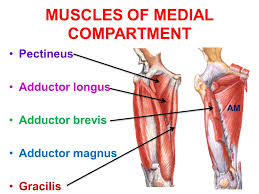
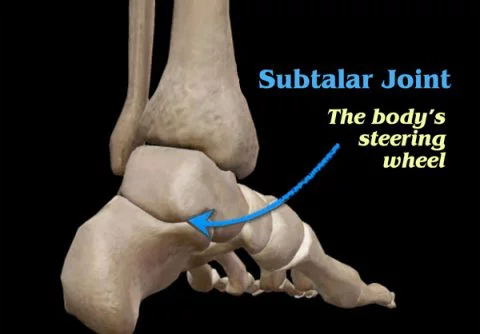

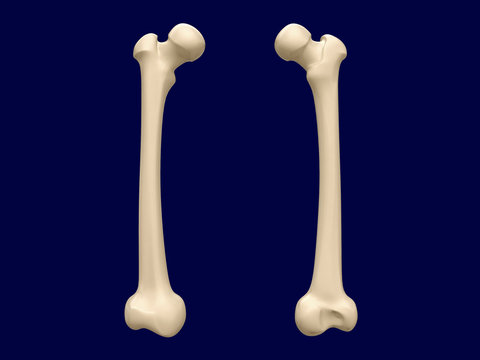
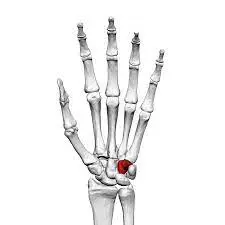
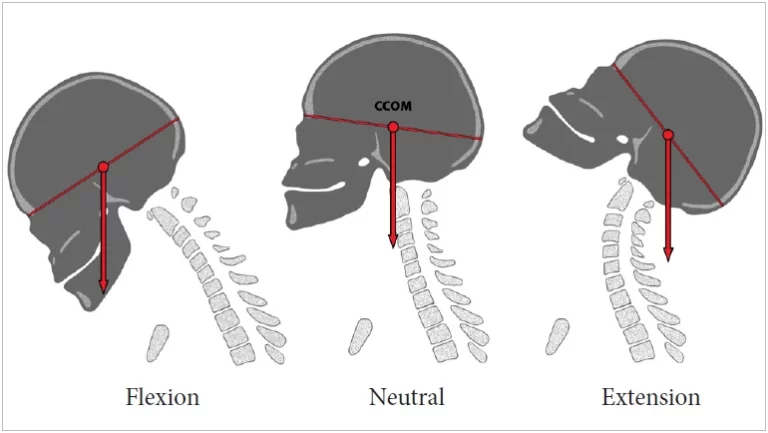
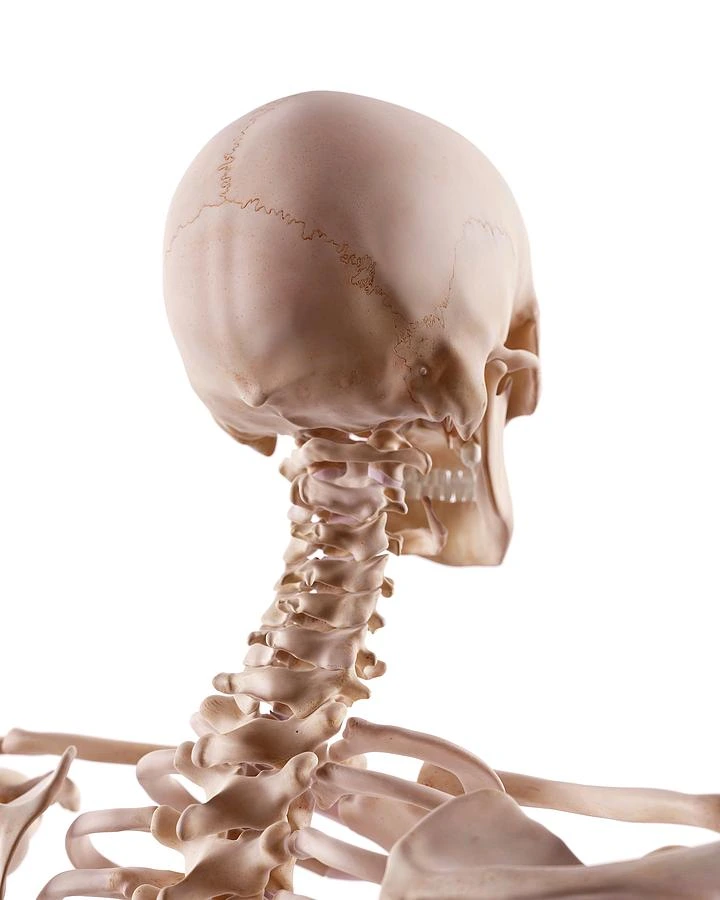
2 Comments